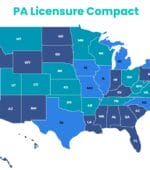Locum tenens maternal-fetal medicine jobs offer flexible, rewarding opportunities for specialists to address care disparities, gain diverse clinical experience, and maintain work-life balance.
Recent Posts
-

Maternal-Fetal Medicine Jobs in 2025: Is Locum Tenens Perinatology Right for You?
-

Hematology/Oncology Job Opportunities in 2025: Market Trends and FAQs
Locum tenens hematology/oncology physicians, NPs, and PAs can play a critical role in helping to curb the shortage of these critical providers, especially in rural areas where the shortage is most acute.
-

The Interstate Medical Licensure Compact (IMLC): What You Need to Know in 2025
As of August 2025, 36 states are IMLC members that serve as State of Principal License (SPL) for physicians.
-

OB/GYN Employment Opportunities in 2025: Market Trends and Essential FAQs
Obstetrician/gynecologists (OB/GYNs) are crucial for women’s health during pregnancy and beyond, and these significant care gaps are driving new OB/GYN employment opportunities for locum tenens professionals, especially in communities where access to maternity services is limited.
-

Top 6 States for Family Medicine Jobs in 2025
We’ve analyzed our internal job listing data and identified the top six states for family medicine jobs in 2025.
-

Top Surgical Specialties by Pay
As supply and demand imbalances intensify, locum tenens work emerges as a crucial solution, offering surgeons unprecedented opportunities to capitalize on market needs.
-

Top 5 States for Travel Healthcare Positions in Summer 2025
Summer 2025 is brimming with exciting opportunities for healthcare professionals across these top five states and beyond.
-

How Locum Tenens Fits Into Modern Healthcare Staffing Solutions
Hospitals, clinics, and other facilities are already reeling from a shortage of providers and it’s hurting patients—tens of millions of Americans live in areas with shortages of primary care, dental, and mental health professionals.
-

My Locum Story: Dentist Laurence M.’s Return to Work As a Locum Provider After Selling His Private Practice
“My first experience was great,” he said. “When it was over, I called Jordan Kelly and said, ‘Okay, find me another assignment.’”
-

PA Licensure Compact Enacted in 19 States
A total of 19 states have enacted the PA Licensure Compact, but the agreement has yet to be operationalized.









